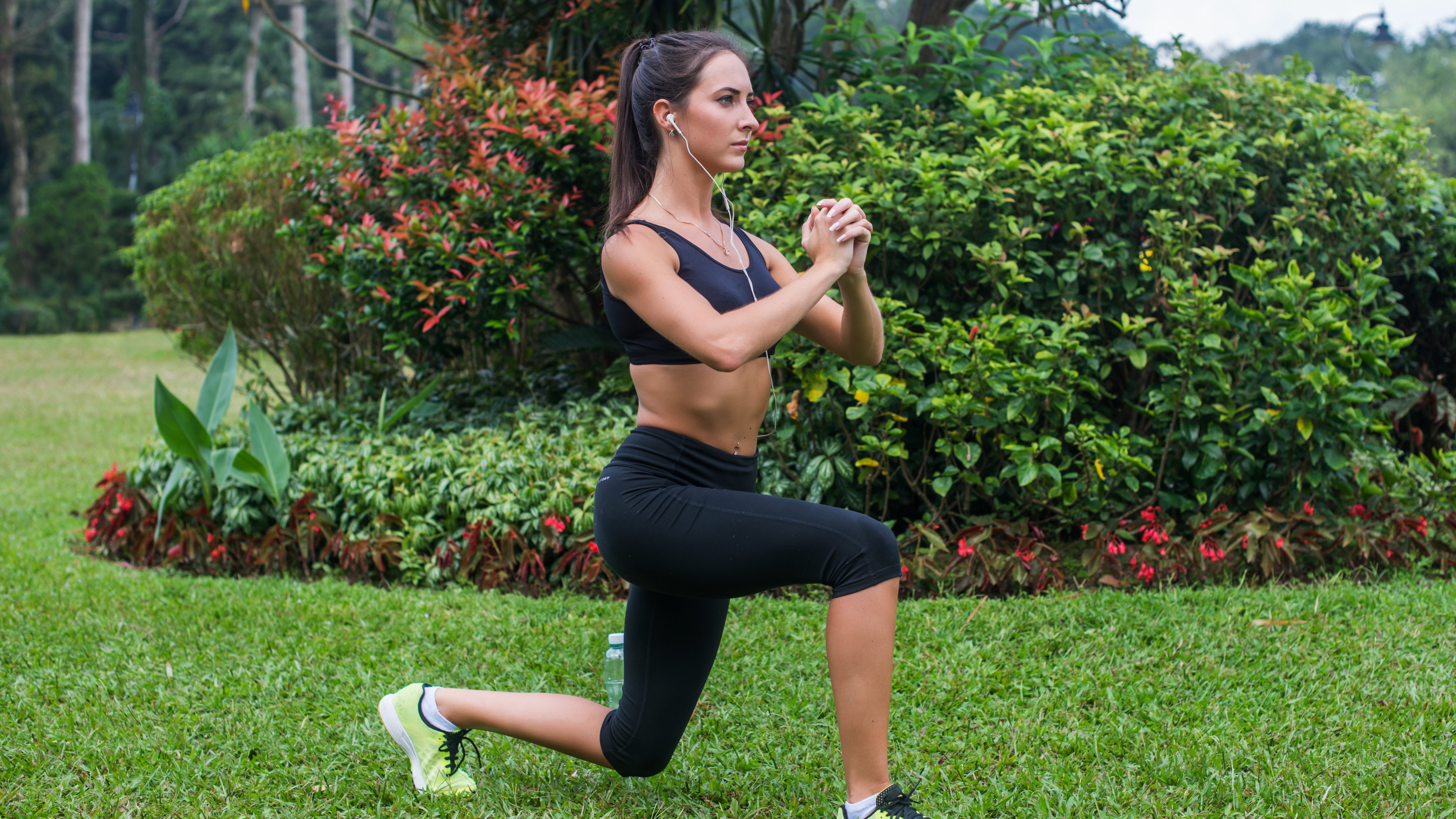I did 150 forward lunges a day for a week — here's what happened
Looking for a fitness challenge? We’ve found it

No lower body workout is complete without a lunge — whether it be a forward lunge or a reverse lunge. This exercise is a staple move because it targets several muscles in the lower body, making it a functional exercise, but it also helps with overall mobility.
As a personal trainer, I am a fan of the forward lunge, although I often prefer adding reverse lunges to my workouts, as it helps target my glutes at the same time. For this challenge, I decided to take on 150 forward lunges (75 on each leg) every day for a week. Read on to find out what happened.
The benefits of a forward lunge
Forward lunges are great for working the muscles in the lower body. Strengthening the lower body is important for several reasons — from helping with everyday movement to making sports a little easier. As a runner, I find that the stronger my legs and glutes are, the longer and faster I can run. Plus, steep hills are easier with stronger muscles to drive you forward.
Let’s not forget that lunges are a unilateral move, meaning they work one side of the body at a time. This is great at ensuring each side of the body is strengthened equally, rather than one side taking over, such as in a squat, where a slight imbalance can cause the left or right side to take more of the burden than the other. This can lead to an even greater imbalance, and eventually, injuries.
Forward lunges are also more of a quad-dominant exercise. Unlike reverse lunges that target the hamstrings and glutes a little more, forward lunges place more emphasis on the quads — the muscles that lie across the front of our thighs. Plus, forward lunges require core stability too, as your core has to be engaged to keep you upright as you drop down into a lunge on one leg and then push yourself back up to standing. If you wobble during lunges, chances are you’re not engaging your core — to do so, think about sucking your belly button in towards your spine.
Research has also discovered the many benefits of forward lunges as well as jumping forward lunges — studies have found that these exercises had a positive impact on sprint running as well as hamstring strength.
How to do a forward lunge:
Here’s how to do a forward lunge with perfect form.
Sign up to get the BEST of Tom's Guide direct to your inbox.
Get instant access to breaking news, the hottest reviews, great deals and helpful tips.

- Stand upright with feet hip-width apart and your core and back engaged.
- Step forward with the left foot, bending both knees so that the front left leg is at a 90-degree angle. Your back shin should be parallel to the floor, and you should maintain a flat back and forward gaze.
- Then come back up to standing, bringing your front left foot back to its start position.
- If you’re doing walking lunges, push up through the front foot to stand, bringing the back foot to meet the front left foot. Then, swap sides, stepping forward with the right foot, and repeat the move.
Fancy making these harder? Hold one of the best adjustable dumbbells with both hands in the center of your chest, or hold a dumbbell on each shoulder as you lunge. You can also try adding a jump — from your standing position, jump up, and as you land, drop into the lunge position, then jump again, swapping legs in the air.
I did 150 forward lunges a day for a week — here’s what happened
These take a while
It took me five minutes to complete 150 forward lunges. It sounds like nothing but that’s a fair amount of time to spend on the same exercise. I entertained myself by listening to podcasts or voice-nothing friends on WhatsApp to try and distract myself from the monotony of lunging back and forth.
My glutes felt nothing
After a while of stepping forward, dropping down, and then pushing myself back up, I wondered if my glutes would be firing up, but I couldn’t really feel them working during the forward lunges. I will add that if you’re looking to work your glutes, you’ll find reverse lunges are the variation for you. As I already mentioned, studies have proven that forward lunges are much more quad-focused…
My quads, on the other hand, felt the burn
A few days into this challenge the 150 forward lunges started to burn out my quads. That said, as I opted for the bodyweight variation, I managed to continue through the reps without needing to pause and re-set. To ensure your quads are working during a forward lunge, make sure you drop down low. As tempting as it might be to do half rep and relieve some of the pressure on your quads, you won’t be engaging the correct muscles or getting the same benefits from the move.
Add a pulse for extra lower body burn
Fancy making your forward lunge harder? To keep myself entertained during the never-ending 150 forward lunges, I would add a small pulse at the bottom of each rep. Not for every lunge, just every so often. Plus, this meant my lower body muscles were kept under tension a little longer than usual, making them work that little bit harder.
Forward lunges are much harder than reverse lunges
Seriously, give me a reverse lunge any day! I feel so much more stable and in control when practicing reverse lunges. I also found I can also move quickly through a set of reverse lunges, compared to forward lunges. That said, practice makes perfect.
150 forward lunges are a good running warm-up
On two occasions, I did my lunges before a run and it was a great way to mobilize my lower body, wake up my muscles, and get my body moving before hitting the sidewalk. Going forward, I’d do less than 150, but these will remain part of my warm-up.
I did 150 forward lunges every day for a week — here’s my verdict
150 forward lunges in one go are pretty excessive, and this isn’t a challenge I’d recommend to everyone, but the forward lunges helped to shake up my workout routine and boost my lower body strength for a week. I also found them useful as a running warm-up, and my quads were given a lovely wake-up as I lunged for five minutes.
Reverse lunges are still my preferred option and I can’t see that changing anytime soon, but for quad engagement and to help with stability, I would recommend adding forward lunges into your routine.
More from Tom's Guide
Lucy is a freelance health and fitness journalist as well as a pre and post-natal personal trainer. Although a sweaty gym session (skipping rope is a must) is her favorite way to ‘relax’, she’s also a fan of bingeing on The Office, snacking on chocolate-coated raisins, and fizz-filled brunches with friends.

